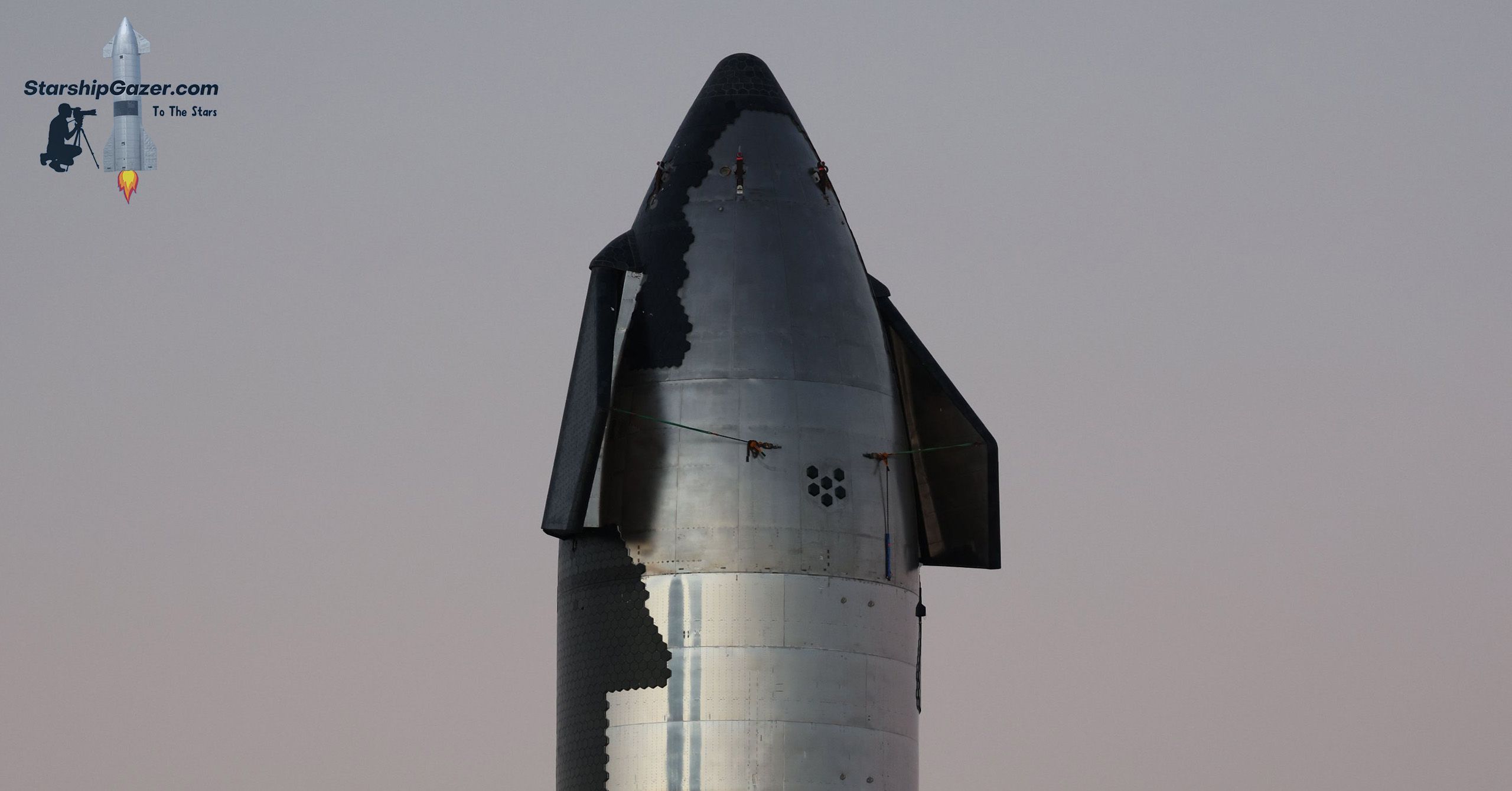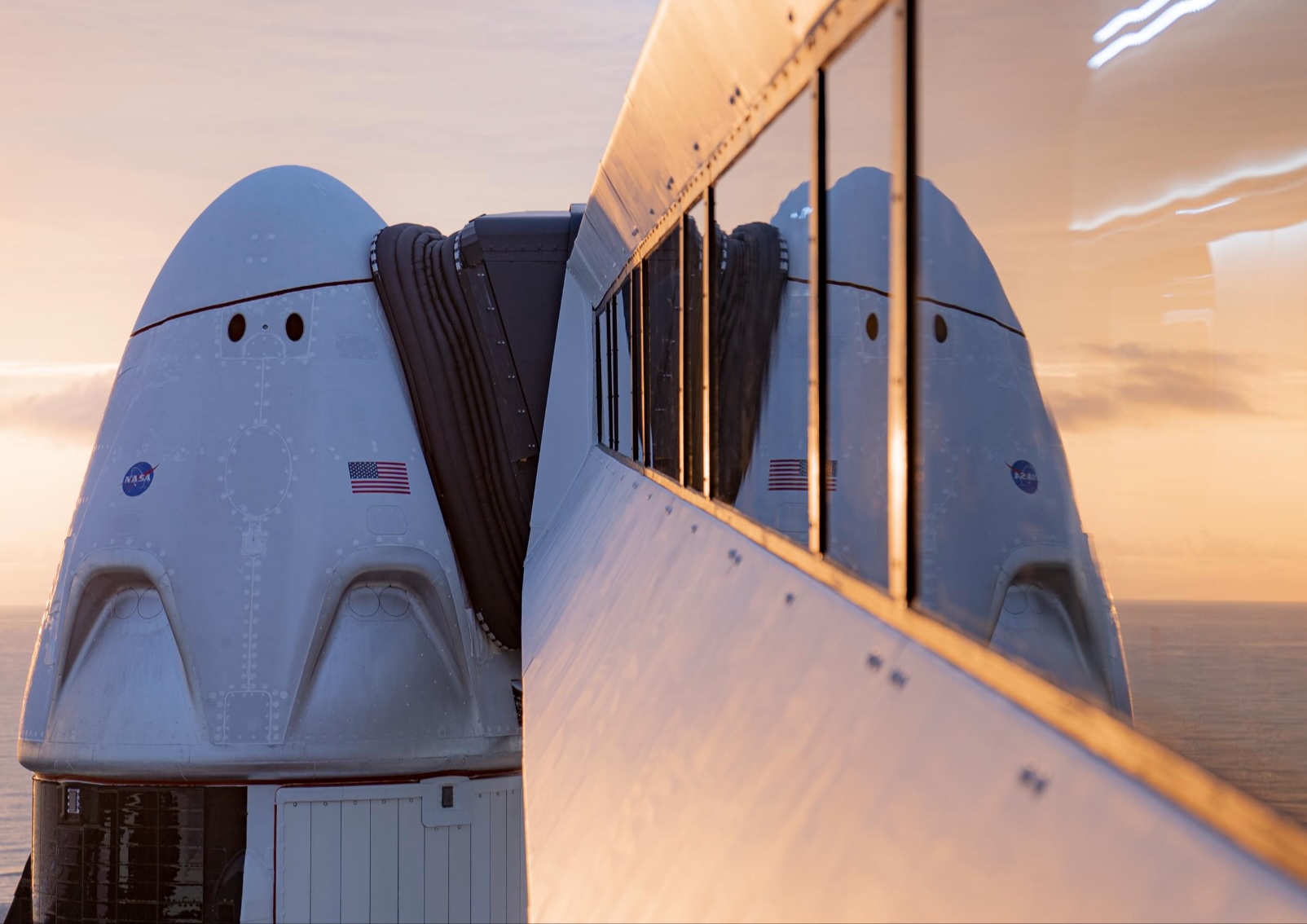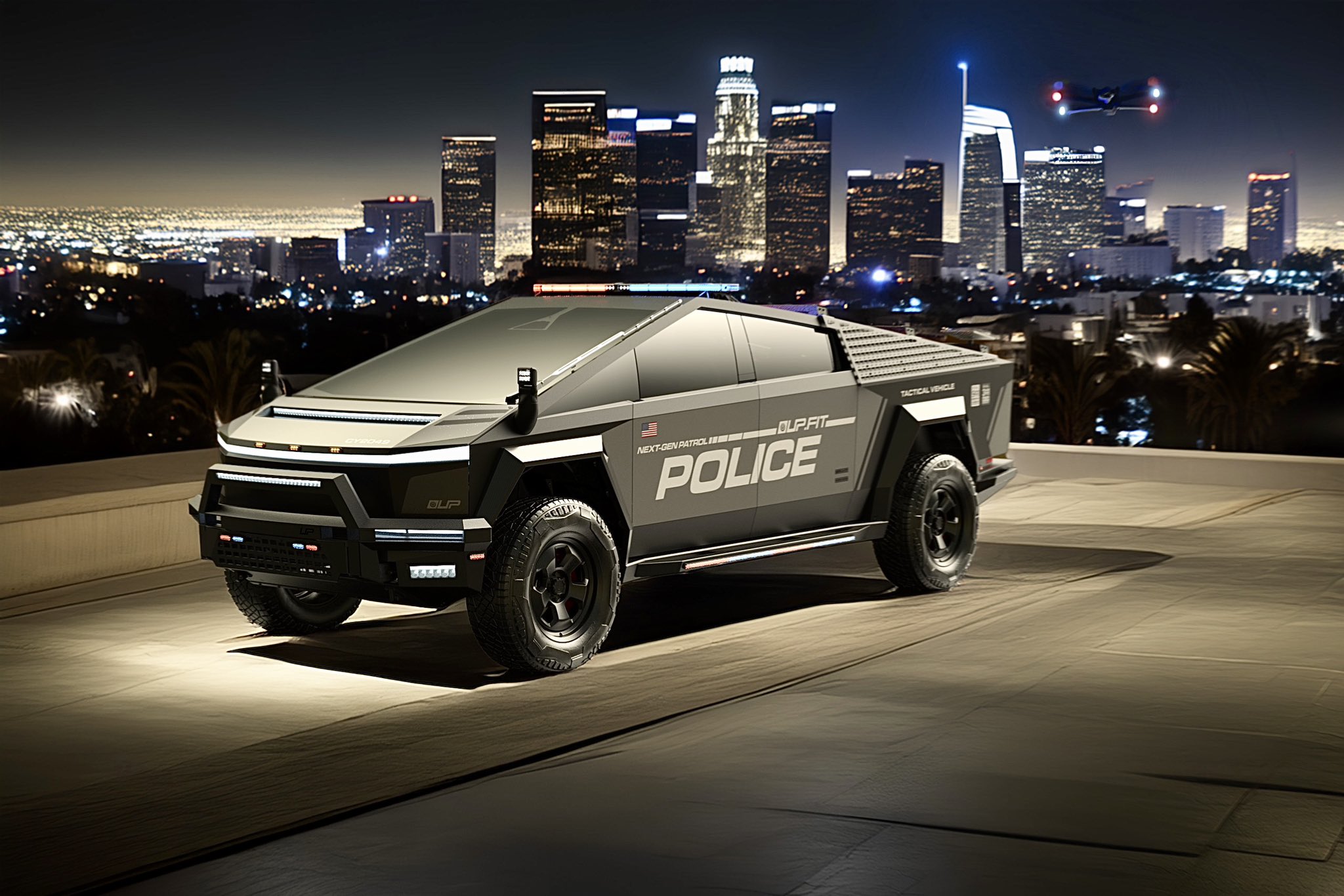

News
SpaceX installs new Starship on static fire test stand
SpaceX may be focused on preparing Starship S24 and Super Heavy Booster 7 for their potentially imminent orbital launch debut, but the rest of the company’s Starship factory isn’t just sitting around.
The laser focus on carefully testing Ship 24 and Booster 7 may have limited the effectiveness of Starbase rocket production, but the factory has continued to produce new ships and boosters. SpaceX has even conducted some limiting testing of a pair of prototypes meant to follow in the footsteps of S24 and B7. In mid-January, that process entered a new and more active phase as SpaceX transported Starship S25 from the factory to the launch pad.
The trip is not Ship 25’s first. Starship S25 first headed to SpaceX’s South Texas launch and test facilities on October 19th, 2022, shortly after the vehicle was fully assembled. Around three weeks of testing followed, and now Ship 25 is back for more.
The update that's rolling out to the fleet makes full use of the front and rear steering travel to minimize turning circle. In this case a reduction of 1.6 feet just over the air— Wes (@wmorrill3) April 16, 2024
Ship 25
The first round of tests was thorough and put Ship 25 through a pneumatic proof test, multiple cryogenic proof tests, and likely a few simulated thrust tests using six hydraulic rams.
“Ship 25 was removed from SpaceX’s other Starship test stand on November 8th, it was rolled back to Starbase’s Starship factory. Ship 25 first rolled to the launch site on October 19th and has since completed four visible tests. On October 28th, Ship 25 survived a pneumatic proof test that showed that its tanks were leak-free and capable of surviving flight pressures (roughly 6-8.5 bar or 90-125 psi). Three cryogenic proof tests followed on November 1st, 2nd, and 7th. The first cryoproof was likely just that – a test that pressurized Ship 25’s tanks and filled them with cryogenic liquid nitrogen (LN2) or a combination of liquid oxygen and LN2.
The next two tests likely took advantage of the customized test stand, which has been semi-permanently outfitted with a set of hydraulic rams that allow SpaceX to simulate the thrust of six Raptor engines while Starship’s structures are chilled to cryogenic temperatures and loaded with roughly 1000 tons (~2.2M lb) of cryogenic fluids. If a Starship can survive those stresses on the ground, the assumption is that it will likely survive similar stresses in flight.”
Teslarati.com – October 20th, 2022
As usual, SpaceX didn’t comment on the development or indicate how that initial proof testing had gone, but Ship 25’s January 14th, 2023 return to the launch site all but guaranteed that that testing had gone more or less according to plan. On January 17th, SpaceX lifted Ship 25 onto Starbase’s only Starship static fire test stand, further confirming that Ship 25 proof testing went to plan.
Soon after its November 2022 return to Starbase’s build site, six Raptor engines were moved into the High Bay and installed on Ship 25. The Starship’s aft was then likely buttoned up with a heat shield before it headed to the test site to begin its static fire test campaign. That campaign could tell us a lot about the status of Starship prototypes. To date, only two Ships have completed full six-Raptor static fire tests, and both took days, weeks, or months to build up to those six-engine milestones with multiple smaller tests. If Ship 25 were to skip those preliminary tests and immediately conduct a six-engine static fire, it would be a sign that SpaceX is significantly more confident in the current Starship design.
Booster 9
Ship 25 is believed to be paired with Super Heavy Booster 9, which recently finished its own round of proof tests. About two months behind Ship 25, Booster 9 rolled out of its Starbase assembly bay and headed to the launch site on December 15th, 2022. The Super Heavy prototype ultimately completed two partial cryogenic proof tests on December 21st and 29th, during which it was likely loaded with around a thousand tons of liquid nitrogen to simulate explosive liquid oxygen and methane propellant. Booster 9 then returned to Starbase’s factory on January 10th, 2023.
Assuming those tests went well, Raptor engine installation could begin at any moment. However, thanks to significant design changes and upgrades present on Booster 9, outfitting and testing this Super Heavy could take longer than usual. Many smaller changes are present, but the most significant by far is the addition of an upgraded version of Raptor. The engine’s combustion-related hardware is likely the same as the Raptor V2 engines present on Booster 7, Ship 24, and Ship 25. But the hardware used to steer each engine – called thrust vector control (TVC) – has been completely changed.
Instead of using a complex web of plumbing and hydraulic power units bolted to the side of Super Heavy, Booster 9’s 13 central Raptors will be electrically steered. That has allowed SpaceX to remove those power units (streamlining Booster 9’s exterior) and reduce the already rats nest of plumbing required to fuel, control, power, and steer dozens of high-performance rocket engines on one booster. SpaceX has been testing electric Raptor TVC for months at its McGregor, Texas development facilities, but it’s unclear if the new technology has progressed to the point that 13 upgraded engines are ready to be installed on Booster 9. In the meantime, SpaceX may install Booster 9’s fixed outer ring of 20 Raptor V2 engines – none of which gimbal or need new electric TVC hardware.
Once all 33 engines are installed, it’s likely that Booster 9 will be thoroughly tested to ensure that all 13 electrically-steered engines work well together before, during, and after numerous static fire tests. SpaceX will also need to verify that the batteries likely powering those new systems function as expected. During the peak stresses they will likely experience, the electric TVC could need to rapidly redirect more than 3000 tons (~6.6 million lbf) of thrust multiple times per second. The peak power required from Super Heavy’s batteries will likely be immense as a result.
For now, the start of Super Heavy B9’s own static fire test campaign could be months away and will have to wait until Starbase’s only orbital launch mount – currently occupied by Booster 7, Ship 24, and Starship’s first orbital launch campaign – is vacated. With that orbital launch debut unlikely to happen before March 2023, Booster 9 has plenty of time to relax inside Starbase’s Wide Bay while Ship 25 begins static fire testing at a separate stand.
News
SpaceX’s Crew-11 mission targets July 31 launch amid tight ISS schedule
The flight will lift off from Launch Complex 39A at Kennedy Space Center in Florida.

NASA and SpaceX are targeting July 31 for the launch of Crew-11, the next crewed mission to the International Space Station (ISS). The flight will lift off from Launch Complex 39A at Kennedy Space Center in Florida, using the Crew Dragon Endeavour and a Falcon 9 booster.
Crew Dragon Endeavour returns
Crew-11 will be the sixth flight for Endeavour, making it SpaceX’s most experienced crew vehicle to date. According to SpaceX’s director of Dragon mission management, Sarah Walker, Endeavour has already carried 18 astronauts representing eight countries since its first mission with NASA’s Bob Behnken and Doug Hurley in 2020, as noted in an MSN report.
“This Dragon spacecraft has successfully flown 18 crew members representing eight countries to space already, starting with (NASA astronauts) Bob (Behnken) and Doug (Hurley) in 2020, when it returned human spaceflight capabilities to the United States for the first time since the shuttle retired in July of 2011,” Walker said.
For this mission, Endeavour will debut SpaceX’s upgraded drogue 3.1 parachutes, designed to further enhance reentry safety. The parachutes are part of SpaceX’s ongoing improvements to its human-rated spacecraft, and Crew-11 will serve as their first operational test.
The Falcon 9 booster supporting this launch is core B1094, which has launched in two previous Starlink missions, as well as the private Ax-4 mission on June 25, as noted in a Space.com report.
The four-members of Crew-11 are NASA astronauts Zena Cardman and Mike Fincke, as well as Japan’s Kimiya Yui and Russia’s Oleg Platonov.
Tight launch timing
Crew-11 is slated to arrive at the ISS just as NASA coordinates a sequence of missions, including the departure of Crew-10 and the arrival of SpaceX’s CRS-33 mission. NASA’s Bill Spetch emphasized the need for careful planning amid limited launch resources, noting the importance of maintaining station altitude and resupply cadence.
“Providing multiple methods for us to maintain the station altitude is critically important as we continue to operate and get the most use out of our limited launch resources that we do have. We’re really looking forward to demonstrating that capability with (CRS-33) showing up after we get through the Crew-11 and Crew-10 handover,” Spetch stated.
Lifestyle
EV fans urge Tesla to acquire Unplugged Performance for edge in fleet and security industry
Unplugged Performance has built a name for itself by producing performance upgrades for Tesla vehicles.

A growing number of Tesla enthusiasts and longtime community voices are calling on the electric vehicle maker to acquire Unplugged Performance, a California-based aftermarket company best known for tuning Tesla vehicles and developing specialized government fleet solutions under its UP.FIT division.
The idea was once considered a niche proposal among EV fans, but it is now gaining serious attention not just as a performance play but as a strategic move to deepen Tesla’s roots in the fleet and security industry.
A strategic fit
Unplugged Performance has built a name for itself by producing performance upgrades for Tesla vehicles, from track-optimized components to visual and aerodynamic upgrades. But in recent years, its UP.FIT division has pivoted toward a more functional future by outfitting Tesla vehicles like Model Ys for police, military, and government use.
That work has sparked growing calls for closer collaboration with Tesla, especially as the EV maker increasingly leans into autonomy, AI, and fleet services as core components of its next chapter.
“I posted this four years ago, but I think it’s more true now than ever,” wrote Whole Mars Catalog, a well-known Tesla investor and FSD Beta tester, on X. “Tesla should buy Unplugged. But not just as a Performance division. What they are doing with UP.FIT unlocks large government and commercial fleet purchases that can improve utilization.”
Tesla fans such as shareholder Sawyer Merritt echoed the sentiment, calling Unplugged a “great fit within Tesla.” adding, “They are literally located directly next to Tesla’s design studio in Hawthorne.”
Enabling the next wave
Supporters of the idea noted that integrating Unplugged into Tesla’s corporate structure could help accelerate the adoption of autonomous technologies in government sectors. With UP.FIT patrol cars already in use across some U.S. police departments, Tesla fans envisioned a future where self-driving Teslas could potentially revolutionize law enforcement, search-and-rescue, and public service logistics.
“Just imagine how autonomous patrol cars could transform policing and bring us into a safer future,” the veteran FSD tester wrote.
The benefits could also extend to Tesla’s existing consumer base. “They also have some incredible products in the works that I think will appeal to many ordinary Tesla drivers — not just those looking for performance or mods. Stuff that’s so good it should have come straight from the design studio next door,” Whole Mars Catalog noted.
Unplugged Performance, founded in 2013, shares not just a product vision with Tesla, but also geography. Its Hawthorne headquarters sits directly adjacent to Tesla’s design studio, and the two companies have maintained a close working relationship over the years. The aftermarket firm has long positioned itself as a “mission-aligned” partner to Tesla.
In response to the recent calls for acquisition, Unplugged Performance acknowledged the support from the community. “Our very existence is to support the Tesla mission with @UpfitTesla and @UnpluggedTesla,” Unplugged CEO Ben Schaffer posted on X. “We love working with Tesla and are grateful for the community’s support since 2013!”
News
Tesla debuts hands-free Grok AI with update 2025.26: What you need to know
All new Tesla vehicles delivered on or after July 12, 2025, will include Grok AI out of the box

Tesla has begun rolling out Grok, an in-car conversational AI assistant developed by xAI, to eligible vehicles starting July 12. The feature marks the most direct integration yet between Elon Musk’s artificial intelligence startup and Tesla’s consumer product lineup, offering drivers hands-free access to a chat-style companion while on the road.
Grok comes pre-installed on new vehicles
According to Tesla’s FAQ page for the feature, all new vehicles delivered on or after July 12, 2025, will include Grok AI out of the box. Owners of older vehicles may gain access through an over-the-air update, provided their vehicle meets a few hardware and software requirements.
Specifically, Grok is currently only supported on Tesla models equipped with an AMD infotainment processor and running vehicle software version 2025.26 and higher. Compatible models include the Model S, Model 3, Model X, Model Y, and Cybertruck. A Premium Connectivity subscription or active Wi-Fi connection is also required.
Tesla notes that additional vehicle compatibility may arrive in future software updates.
Grok’s features and limitations for now
Drivers can engage with Grok using the App Launcher or by pressing and holding the voice command button on the steering wheel. Grok is designed to answer questions and hold conversations using natural language, offering responses tailored to its chosen personality—ranging from “Storyteller” to the more eccentric “Unhinged.”
For fun, Tesla posted a demonstration of Grok likely running on “Unhinged” talking about what it would do to Optimus when they are on a date, much to the shock of the humanoid robot’s official social media account.
It should be noted, however, that Grok cannot currently issue commands to the vehicle itself, at least for now. Traditional voice commands for tasks like climate control, navigation, or media remain separate from Grok as of writing.
The feature is being released in Beta and does not require a Grok account or xAI subscription to activate, although that policy may change over time.
Grok privacy and in-car experience
Tesla emphasizes that interactions with Grok are securely processed by xAI and not linked to a user’s Tesla account or vehicle. Conversations remain anonymous unless a user signs into Grok separately to sync their history across devices.
Tesla has also begun promoting Grok directly on its official vehicle webpages, showcasing the feature as part of its in-car experience, further highlighting the company’s increasing focus on AI and infotainment features on its all-electric vehicles.
-

 Elon Musk2 weeks ago
Elon Musk2 weeks agoTesla investors will be shocked by Jim Cramer’s latest assessment
-

 Elon Musk3 days ago
Elon Musk3 days agoxAI launches Grok 4 with new $300/month SuperGrok Heavy subscription
-

 Elon Musk5 days ago
Elon Musk5 days agoElon Musk confirms Grok 4 launch on July 9 with livestream event
-

 News1 week ago
News1 week agoTesla Model 3 ranks as the safest new car in Europe for 2025, per Euro NCAP tests
-

 Elon Musk1 week ago
Elon Musk1 week agoxAI’s Memphis data center receives air permit despite community criticism
-

 News2 weeks ago
News2 weeks agoXiaomi CEO congratulates Tesla on first FSD delivery: “We have to continue learning!”
-

 Elon Musk2 weeks ago
Elon Musk2 weeks agoTesla scrambles after Musk sidekick exit, CEO takes over sales
-

 News2 weeks ago
News2 weeks agoTesla sees explosive sales growth in UK, Spain, and Netherlands in June
















